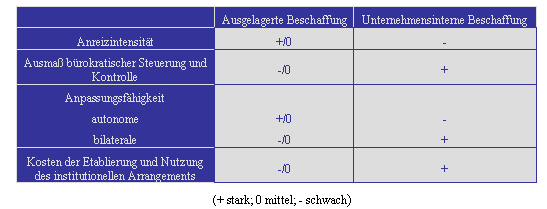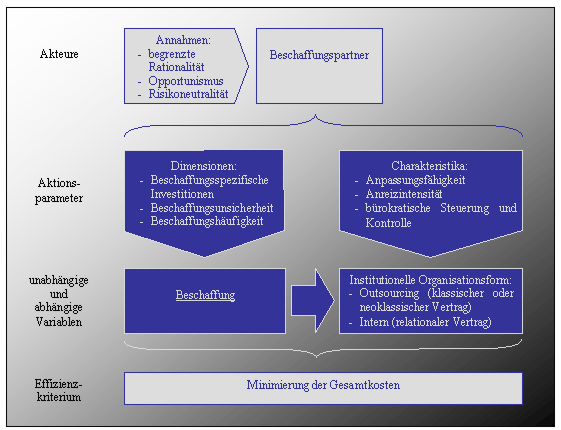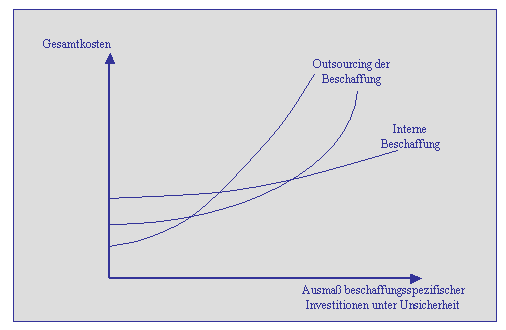
Tab. 5: Comparison between paged out and enterprise-internal procurement regarding the organization form characteristics from the transaction cost theory.
4 Analysis outsourcing of the procurement
4.1.2 The procurement form as institutional arrangement
Also in practice to finding organization forms of the procurement process can be examined from
transaction-cost-theoretical view.
In this context two possible organization forms come into question: "outsourced" and the
enterprise-internal procurement.
"outsourcing, a word creation out" outside "and" resourcing ", generally designates the
external supply of services." 107
In this work one regards the outsourcing and/or paging
of the procurement service, whereby one locks with one or more selected service company(s) a contract and to it/them the tasks of
procurement hands over, which are not to be settled any longer internally. From the possible contractual relations result two
main organization forms outsourcing of the procurement .
"(...) no firm partnership between enterprises and
service supplying company can be determined, i.e. the enterprise selects and/or the most economical service supplying company
most suitable in each case for each procurement transaction." 108
The contractual relationship is thus short term and is limited to the exchange of the achievement "procurement" with the return
"money", the determination of the contractual item and the contract conditions is very exact and the possible conflicts on
the course of law is solved.
Here it concerns a classical contract (market situation), in which very efficient incentive -,
control and (autonomous) adjustment mechanisms exist.
If a certain partnership with a service supplying company is specified,
the planned relations duration is usually medium-term, the definition of the contractually agreed upon achievement and return
is less clear, so that enterprises and supplier count on contractual adjustment need.
Due to the open regulation need the
completion of the transaction is required still limited not on the discrete act of the procurement, but also after contract conclusion a certain measure
of decision, tuning and co-operation of the contracting parties.
"(...) E.G. itself the service supplying company can also
around additional service, like transport and logistics cares." 109
This corresponds to the neoclassical contract form. Compared with the market mechanisms outsourcing after the classical contract are more weakly pronounced the characteristics outsourcing after the neoclassical contractual relation: Beyond the contractual additional incentive and control mechanisms are necessary.
In addition this kind of Outsuorcing offers a not completely autonomous adaptability.
During the enterprise-internal procurement the own purchase department implements the tasks, which takes over with the outsourcing of the Supplying service company, so that the contractual relation comes within the enterprise.
With this relational contract the contracting parties plan a very long-term relationship by openness in the determination of the contractual article. The solution method of possibly arising conflicts is certain in the context of the contract.
Regarding the incentive and control mechanisms the internal procurement for the reasons mentioned in chapter 3.1.2 is a costly institutional arrangement. It shows however advantages in view to the efficient (bilateral) adaptability and the faster and more economical information exchange, which make possible also a better protection from opportunistic behavior.
The following table compares the paged out with the internal procurement regarding the organization form characteristics from the transaction cost theory.

4.1.3 the procurement form decision after the basic model of the transaction cost theory
From main statement transaction cost theory follows that the procurement can be organized and completed the more efficiently, the better the characteristics of the organization form the requirements resulting from the procurement dimensions corresponds.
Thus the basic model of the transaction cost theory applied to the procurement looks as follows:


|
Top| Home| << Back | Next >>
/en/home.php" TARGET="_blank">>> Home Page << |